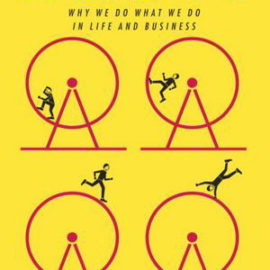Want to learn the ideas in Confidence Code better than ever? Read the world’s #1 book summary of Confidence Code by Katty Kay and Claire Shipman here.
Read a brief 1-Page Summary or watch video summaries curated by our expert team. Note: this book guide is not affiliated with or endorsed by the publisher or author, and we always encourage you to purchase and read the full book.
Video Summaries of Confidence Code
We’ve scoured the Internet for the very best videos on Confidence Code, from high-quality videos summaries to interviews or commentary by Katty Kay and Claire Shipman.
1-Page Summary of Confidence Code
Overview
If you have an idea in a meeting, don’t sit back and wait for someone else to speak up. Just share it with the group. Even if people argue against your ideas, you will learn how to deal with those situations better next time. Eventually, speaking up more often will increase your confidence when doing so.
In general, women are less confident than men. However, authors Claire Shipman and Katty Kay argue that confidence is a choice. Women can make themselves just as confident as men in The Confidence Code by following the steps they lay out in their book.
The Confidence Code is especially valuable to women who work in male-dominated environments, as it helps them overcome their lack of confidence.
In this article, you will also discover: how lack of confidence may have cost you a promotion; why women tend to be less confident than men and how failing a math exam can actually make you more confident.
Big Idea #1: Confidence plays a key role in taking action.
Have you ever looked back at conversations or opportunities in your life and thought “I wish I had said/done that”? Maybe it wasn’t a big deal, but you didn’t feel confident enough to try it.
Most of us have felt this way at some point in our lives. We prefer to stay inactive, and that’s particularly true for women. If we lack confidence, it means we’re uncertain about whether our efforts will be successful, so we tend to avoid trying new things.
In an experiment by professor Zach Estes, it appeared that male students performed better than female students. But upon closer inspection, the professor saw that many of the women had not answered a lot of questions.
So, Estes told the students to answer every question on the test. The result? Women performed equally as well as men.
But the women didn’t even try to answer many questions. They were afraid of making a mistake, so they left blank spaces instead.
In this situation, if the people involved were more confident, they would have been less afraid and tried to solve the problem.
But what if the attitude of optimism played a role, rather than confidence? Well, optimism – an optimistic outlook that everything will work out in the end – is different to confidence. Confidence refers to taking action and believing that you can succeed. But being optimistic does help because it leads to actions which improve your confidence.
We know that it’s important for us to believe in ourselves so we can succeed. We also know that this is easier said than done. Now, we’ll explore how confidence levels differ among men and women.
Big Idea #2: Women and men have different confidence levels.
There are many books that discuss the difference between men and women. We know that there are differences in confidence, as well. Women tend to display their confidence differently than men do. For example, they don’t act aggressively like men do in the workplace or other situations where dominance is expected.
In fact, men still dominate the workplace. For instance, only four percent of Fortune 500 companies have women CEOs.
Men tend to show confidence in a more aggressive manner than women do. Men are quicker and more energetic about expressing their opinions, while women tend to collaborate with others and be humble.
Furthermore, the qualities that men typically possess are valued more highly in the workplace than those possessed by women.
Like this summary? Want to learn more from books than ever? You'll love my product Shortform.
Shortform has the world’s best guides to 1000+ nonfiction books and articles. Even better, it helps you remember what you read, so you can make your life better. What's special about Shortform:
- The world's highest quality book guides - we discuss the book's main ideas, with expert analysis and commentary expanding will beyond the book
- Interactive exercises that teach you to apply what you've learned
- Discussion communities - get the best advice from other readers
Sound like what you've been looking for? Sign up for a 5-day free trial here.
It is important to understand that women can act in a soft manner and still be confident. For example, as long as you stand by your opinions and defend your point of view, it doesn’t matter if you do so aggressively or not. Active listening and cooperating with like-minded colleagues – often viewed as more feminine strategies – can also be an indication of strength. On the other hand, some women act tough but there’s a downside to this approach: it’s artificial which makes others perceive them negatively.






